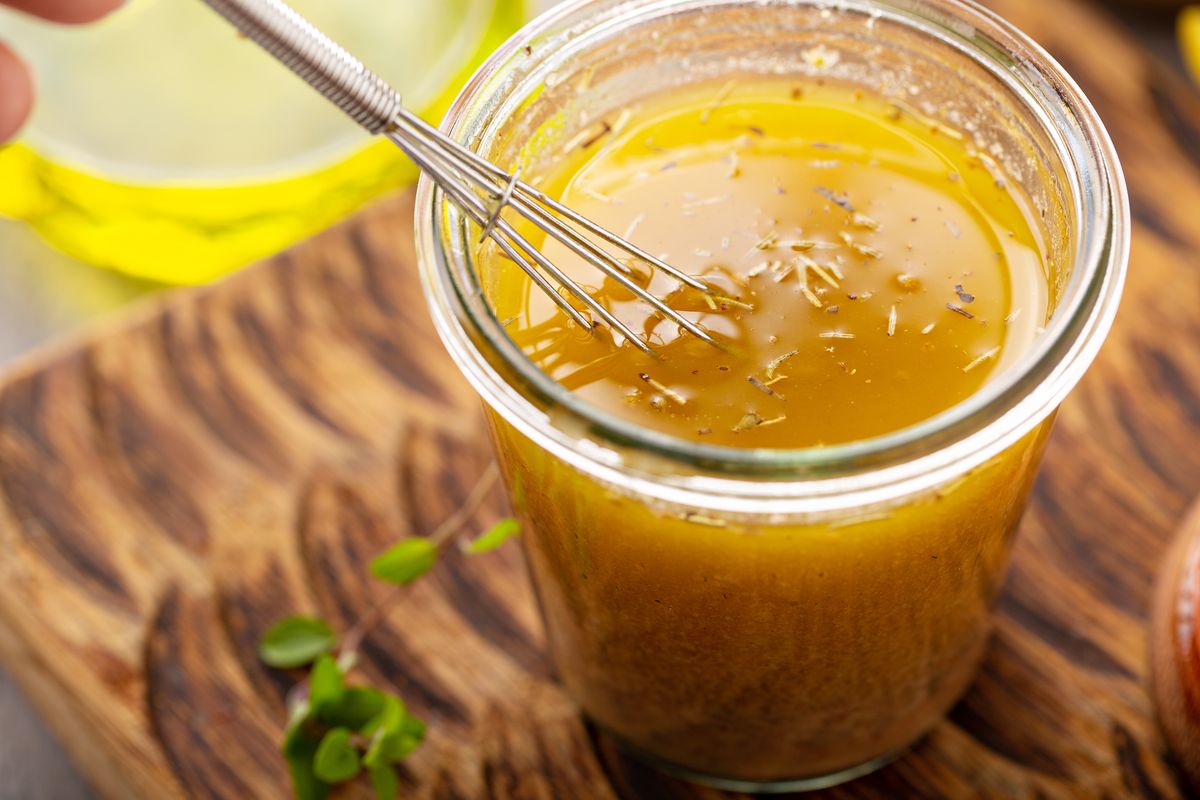Recipes
How to make vinaigrette: the sauce recipe


A French sauce, perfect for enriching fish or meat dishes or vegetables in salads: here is the recipe for the vinaigrette sauce.
It is tasty, ready in a few minutes and excellent for enriching your dishes: many confuse it with citronette, but the vinaigrette has its own recipe and personality (not to mention the fact that it was certainly born before its lemon variant). The classic recipe is very simple and quick to prepare, based on 3 parts of oil and 1 part of vinegar mixed wisely, so that they do not separate. Its name itself comes from the French word vinaigre , meaning vinegar.
Perfect in combination with meat or fish, it can be used to marinate meat or as a condiment. Here is his preparation!

Preparation of the vinaigrette
- The preparation of this sauce is truly embarrassingly simple. Start by placing all the ingredients in a container with high sides (you can also put them in a bowl).
- Blend everything with an immersion blender, or with electric whisks or even with a hand whisk or fork.
- Check that the two liquids have mixed well together and that the salt has dissolved, then use it for your recipes.
A very quick version using only a jar is the following: put all the ingredients in the jar and close with the lid. Shake vigorously for a few minutes to mix all the ingredients.
Vinaigrette: the variations
There are many variations (famous and otherwise) of this sauce, some involve replacing the acid base, while others enrich it with other ingredients. Let's see the best known and most delicious ones:
- Citronette . The most famous variant is precisely this, 1 part of lemon juice and 1.5 parts of extra virgin olive oil. It is mainly used for white meats and fish, for example to marinate salmon but also as a condiment for octopus and potatoes.
- Orangette. Same as citronette except for the acid base that changes from lemon to orange. Sweeter and less sour, also in this case it is perfect for fish but also for dressing fresh salads.
- Italian dressing . A very well-known variant in the United States, this sauce is based on vinaigrette and enriched with chopped peppers and spices.
- Vinaigrette + honey . Add 1 teaspoon of honey to the basic dressing and use this sauce to pair with cheeses, fruit or raw vegetables.
- Brazilian vinaigrette . Also called Mohlo vinagrete, it is prepared with the basic vinaigrette recipe, but then enriched with chili pepper, green pepper, tomatoes and onion. All mixed raw to obtain a perfect condiment especially for red meats.
- Vinaigrette with balsamic vinegar . If you want a more sweet and sour taste, don't miss this version, where the white wine vinegar is replaced in equal quantities with balsamic vinegar. Perfect for red meats, salads, but also in combination with fresh fruit and mature cheeses.
storage
Sauces of this type can be stored in the refrigerator in an airtight container for 3/4 days. Since it tends to separate, if necessary you can heat it in a bain-marie for 5 minutes before using it.
History and origin of the vinaigrette
The history of the vinaigrette begins in the 18th century , when it was used as a small portable container to hold cotton soaked in aromatic vinegar. These containers, known as "vinaigrettes", were popular among women of the time for their use in combating bad odors and for recovering from sudden fainting, thanks to the strong aroma of the vinegar which stimulated the senses.
In the 19th century , vinaigrettes became particularly popular in Europe, especially in England and France, as fashion accessories among upper-class women. Today , the term “vinaigrette” commonly refers to a type of salad dressing , composed primarily of oil and vinegar mixed to taste with various spices and flavorings. This use of the term comes from the tradition of aromatic vinegar, which was the main ingredient in ancient vinaigrettes.
Riproduzione riservata © - WT











